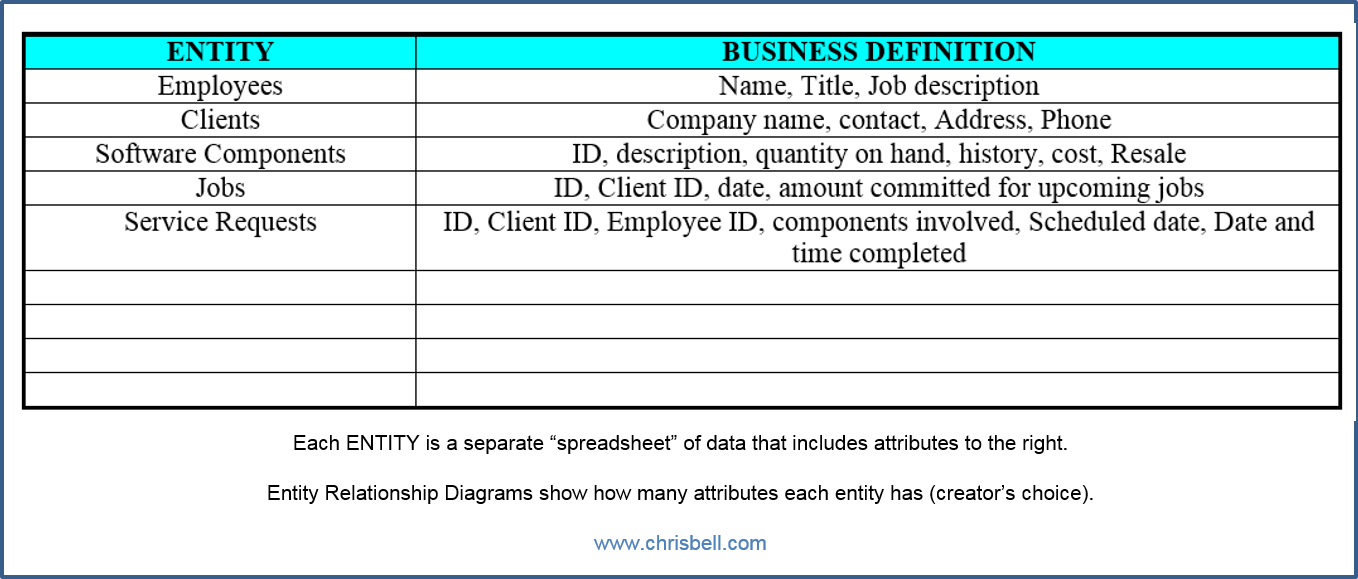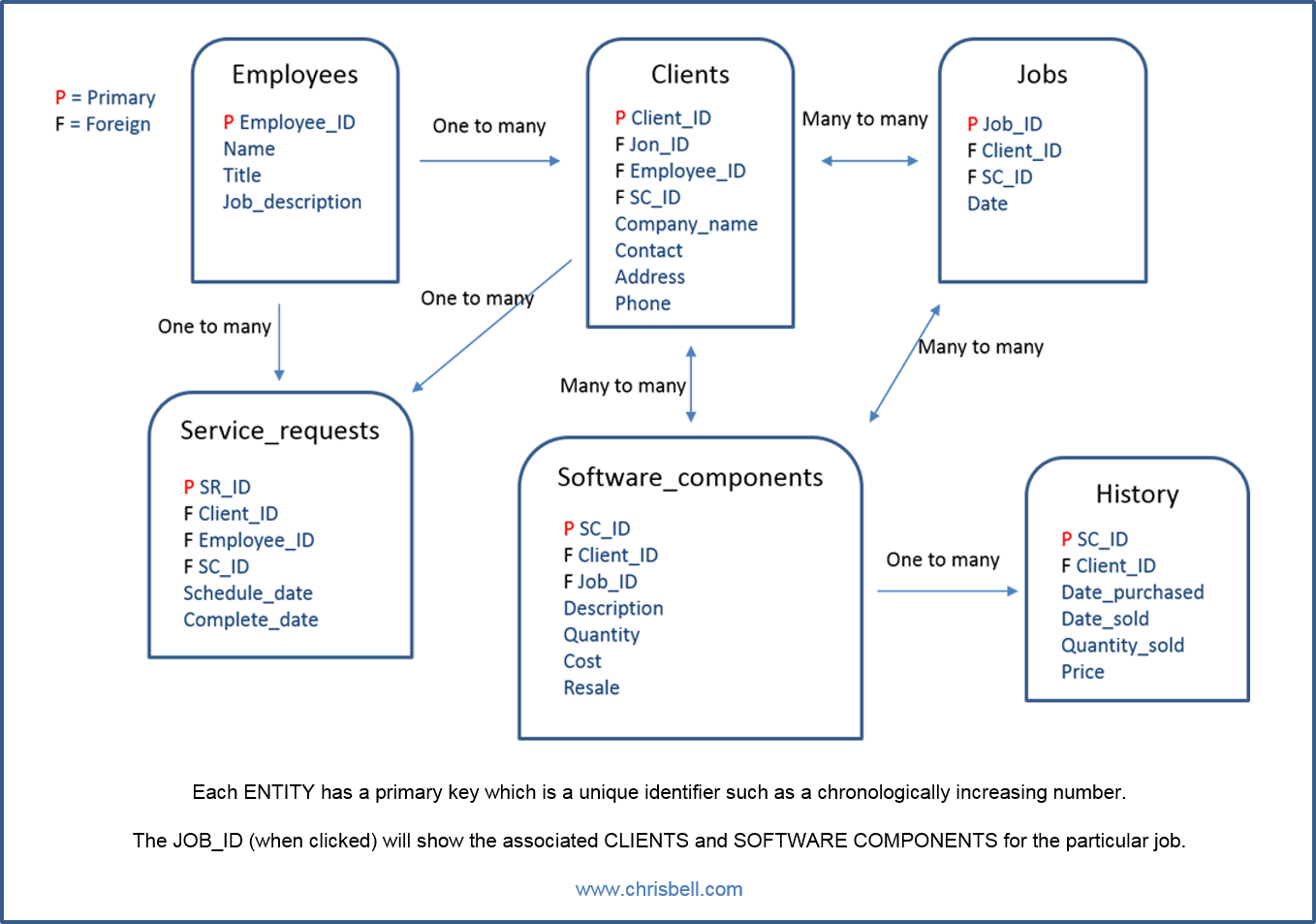 |
Chris Bell | 'A business that makes nothing but money is a poor business.' |
| - Henry Ford |
 |
Chris Bell | 'A business that makes nothing but money is a poor business.' |
| - Henry Ford |
SNHU - IT-415 Advanced Information Systems Design
Written by: Chris Bell - May, 2014
Customers, inventory items, vendors and service requests are all "Entities" that become separated tables in the RDBMS (Relational Database Management System). There are some definitions below that describe each entity and how it will be used in the database which makes it easier to create the context ERD model.

The context diagram (more about Context Diagrams) below shows each table, the attributes it requires, and the primary and foreign keys. The primary key would be the number that designates a unique identification, similar to any account number a person has. When you enter the number into the system it's unique every time, and pulls up the rest of the account information, such as Name, Address, Phone, Email, etc. The foreign key is the primary key from another table, and it's used when tables connect. For example, the customer's primary key is their account number within the CUSTOMER's table, and their are orders within the ORDER's table that each have a primary key. In the customer's table, the customer number is the primary key and the customer orders would be the foreign key. That way all of the orders show up within each customer number when the number is entered into the system.

References:Whitten, Jeffrey L., & Bentley, Lonnie D. (2007). Systems analysis and design methods, 7th edition. Boston, Mass.: McGraw Hill. |